PROSTHETIC EXISTENCES: Disability and Art as a Resistance Practice
(listen to this selection, read by Diane R. Wiener)
Beyond my body ages
the uncolonized field
explored by the excluded
languages
the screaming limbs
Beware Humanity
my ProstEtHic Poetry
dances
The impossibility
the equality lies
a Performacitizen
from survival lands.
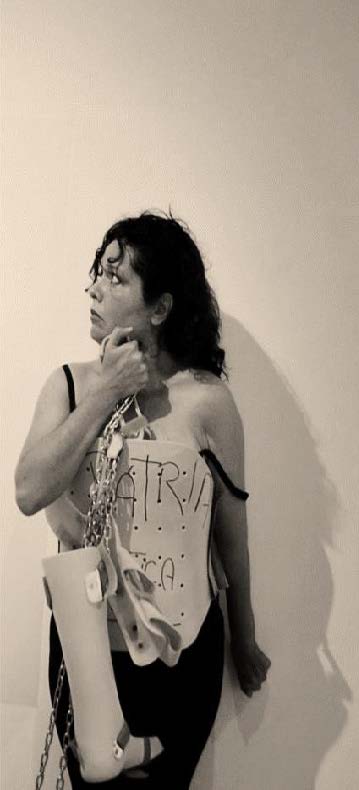
In October 2013 I arrived in New York City to conduct interviews with disabled North American artists for doctoral research I was developing for the Federal University of Bahia, Brazil. It was the first time I visited the famous city, capital of mercantile art and cradle of great corporeal productions of dance and theatre. I remember the shock I felt in front of the American world and in relation to the experience I was facing in Brazil as an artist, educator and person with disability. Despite our difficulties of existence, for all the hardship we went through from the basic conditions of study, food and artistic visibility in a Latin America of social forgetfulness and erasures.
I was a PhD student of a public Brazilian university and besides that I already had an artistic trajectory of struggling with and defending disability as a rupture of hegemonic discourses of ability within the academia and mainly within the art systems still trapped in a paternalistic policy of protection and patronage of our artistic existence. For instance, there has been a tradition in my country to offer incentive through grants, scholarships, public auditions, specific commissions and art policies for specific artist, in this case, disabled artists, which as far as I am concerned, only create more separations and classifications. It does not allow the movement of a culture that was intended to give us autonomy, since we are already autonomous artist. This is a kind of patronage that mobilizes a specialization of our art and of our political views in society. I defend an artistic standpoint that mobilizes all society, every single artist and that creates within common spaces as well as public policies for art.
What I saw in the USA was fascinating, especially for the political and creative articulation that I could see among artists and people with disabilities. Artists and groups such as Axis Co Dance, Dandelion Dancetheater, Bill Shannon, Alice Sheppard, Lisa Bufano (in memoriam) and others that I had opportunity to know, impressed me because of their community engagement and for all the access they had already gained in cultural institutions, the art and for the wide discussion in educational spheres.
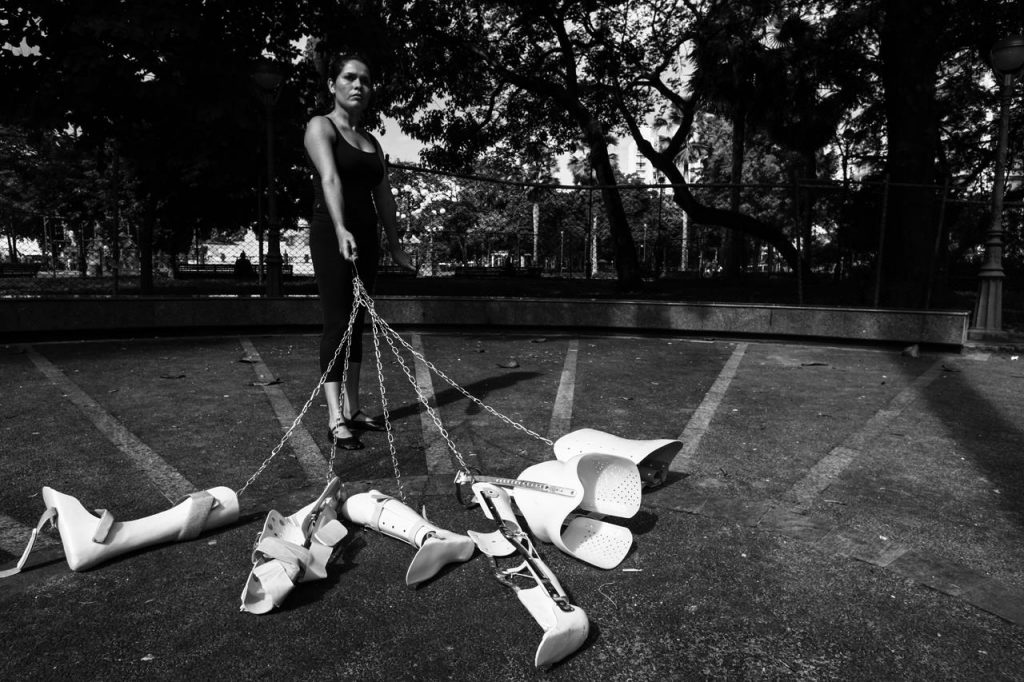
The international experience that I had between 2013-2014 was a turning point to reaffirm my political project as an artist and educator in Brazil. Poetics would continue to act in my tireless search. I appropriate Disability as the impulse and home of my creations in the spaces and places of the world that I observe(d) without filters.
I do not intend here to delve into what was investigated during my academic research because I live in a country where the social reality has not yet promoted inclusive spaces or an understanding about the importance of inclusion in social and cultural spaces. In my country, my artistic trajectory can be considered dissident with regard to artistic discourses on disability, social justification of disability, advocacy for specific niches for artists with disabilities, and recognition of institutions that support artists with disabilities.
Being an artist and a female person, born and raised in the northeast of Brazil and disabled, kept me in the underground of art. I speak in the sense of contributing as an artist from what I believe is the experience of disability, from immersing in disability itself, in the anti-forms of the world. I also recognize myself as part of this world, as a quasi-body, not accepted, even in the same groups understood as “minority, such as PwD (people with disabilities), as I fell my work conception might be distinct from them.
Poética Protética (Prosthetic Poetics), was a project developed between 2012 and 2021 where I made a deep immersion in the experience of disability in my body. One of the main questions that concerned me was: how to create a hypervisibility/spectacularity about my body in its relationship with an excluding world?
I found myself facing a dilemma between not being understood by my personal comprehension of disability as an experience flows through my limbs and my poems, which are a fundamental part of my art. I started to observe objects that I could use as creation material: electrical appliances, clothes, things carried by people in the streets. Somehow, nothing fulfilled the needs I had about how to activate the force brought in my body by the spasms, as well as the pain and medication I took for body relief.
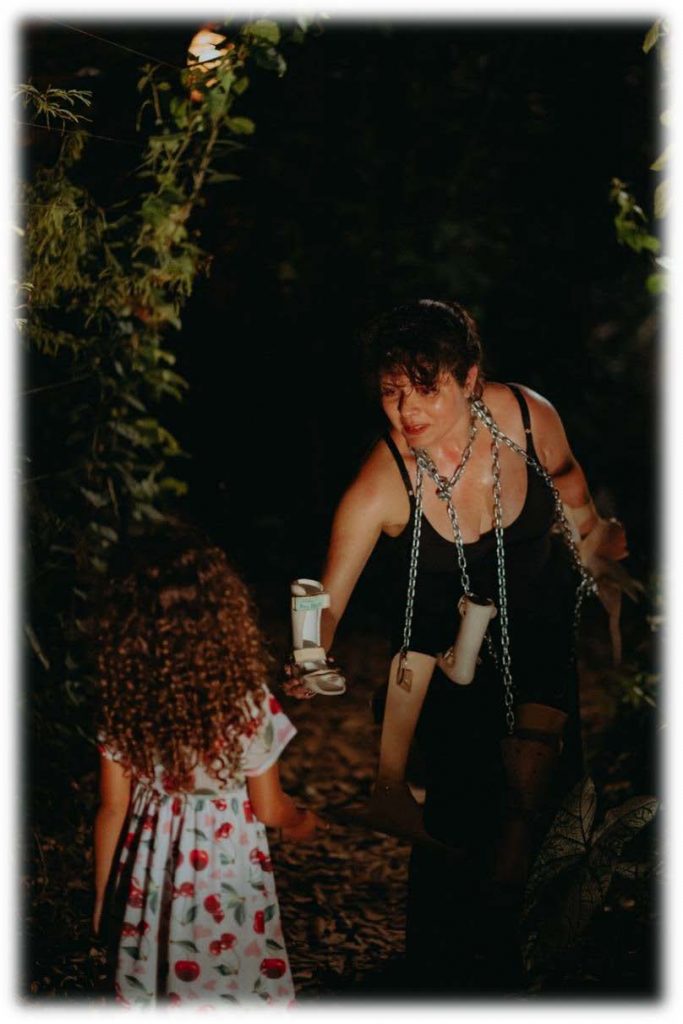
A year earlier I started a project divided into stages called Deformed Geographies, in which I located and approximated the perceptions of my hemiplegic body with the natural landscapes from my hometown. Phenomena such as drought, harshness, aridity, saltpeter, sea water, undergrowth and the rigidity of stones were incorporated in four performances entitled Exhale, a concert to an excluded body. Initially, this work had been commissioned for to the Dark Music Festival in Iceland in collaboration with the Chinese musician Jing Jing Luo and performed in natural landscapes.
A body
Almost
I am at the gallery In a divided Homeland Of deaths Education is a kind of stone And lives in me And I hear citizens in silence I drag Together The prothesis born In a deformed world In my arts In orthopedic cacti Occupied cracks Under failed skills Arts still oppressed. I drip myself My almost body In grains of sand And In crooked drawings Am I A BODY? EXHALE The Poetic Prosthetics My freedom rehabilitated That I am carrying Learning from halves Out there The breath And inside here Of non-efficiencies Amputated activisms From me the dance And cripple commodities And the world. Pulsating impossibilities.
My sidewalks do not guide citizenship….
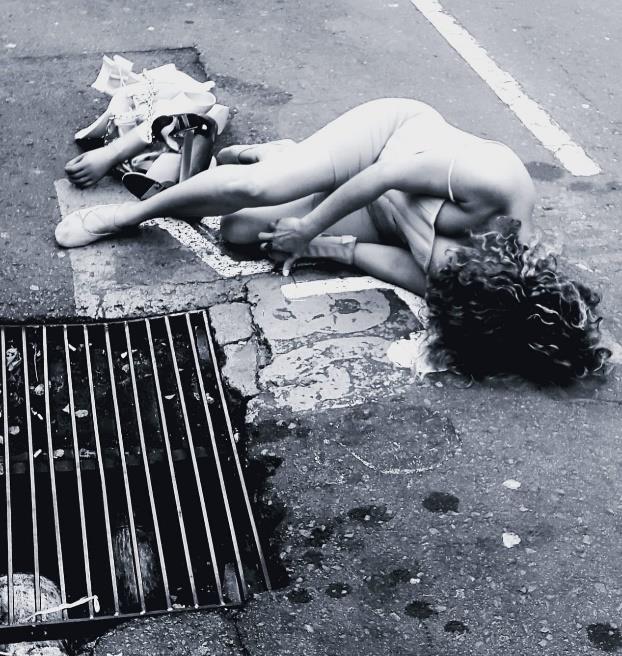
As an artist and researcher, I built an aesthetic experience with disability that pushed me to think of it from the perspective of creation and knowledge through art. Somehow, I felt the responsibility of my own accountability and of so many other struggles that preceded me, but I did not seek an ambition of a pretentious cure of the world. Egalitarian social modification, social change, but the consciousness returned to a society that needed to start reflecting about the place that the experience of disability occupies in their lives.
Thus, I chose the objects of orthosis and prosthesis as social metaphors of correction and straightening, which are exposed and hyper-affirmed throughout my performances. I also understand that the very notion of performing/performance is flawed, susceptible to and passionate about mistakes and incongruities of our time. This deformed site does not constitute, in my opinion, the pretentious idea of territories, specific causes, unilateral struggles or true concepts that we might inherit from academia.
There is a constant demand for activism in my country, and sometimes my art asks: What art can my body generate if it can only rely on state aid? What policies does my art breathe and exhale from my experiences bled into the body? I have sought to create between gaps, infiltrating myself as part of society that does not want to acknowledge itself as whole, or with a project of an ‘artist’ that simply must conform to the will of the art systems.
I am someone who creates in states of IMPOSSIBILITY and withdrawal. I have walked the winding line of uncertainties and offer myself to the world as part of a purpose impregnated in the experience with disability.
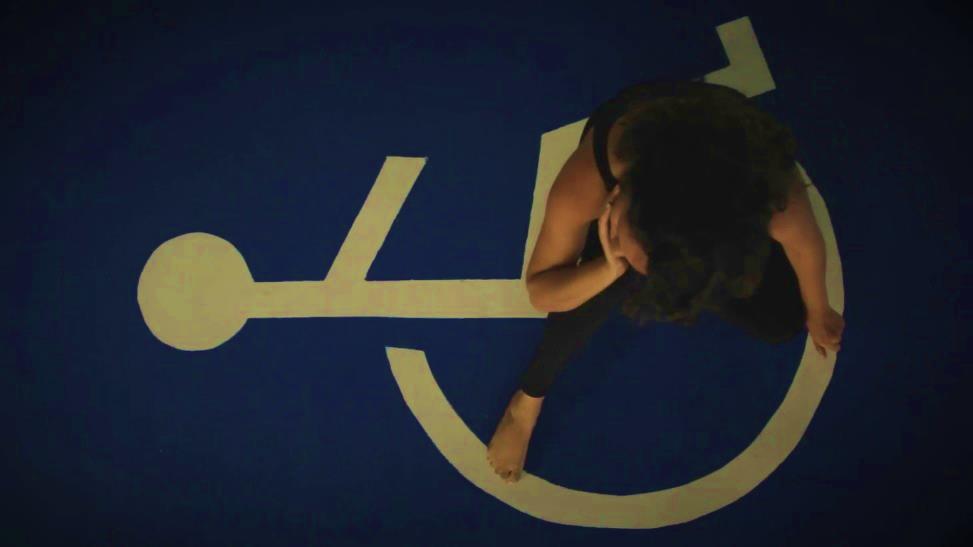
Disabling me
As a blue symbol
Parked
In inclusive policies
That exclude millions
My thoughts are seated
Upon my arms
And I see
The frames my body
Wheelchairs were drawing
A prosthetic view
I am dancing
A tale of sovereignty
Poetry serves me as a kind of prosthesis, a form that I can discard or not, replace or not, in my creations. Poetry becomes another work of art that is always associated with what my body feels with the dance or performance I perform either in urban or traditional art spaces. My verses are the way I have found in the last years to make my work more accessible and to provide an experience of artistic fruition for all people, including the visually impaired.
The written word begins to inhabit the universe of my pains, spasms, the weakness of bones already worn out not only by disability, but also by daily contact with excluding architectures and the precarious relationships that our bodies are facing in Brazil. The precarious daily life affects us both emotionally and physically because we are facing a reality which does not see us as artists. Thus, we live a dilemma of uninterrupted social justification that needs to say all the time: yes, we can; yes, we are capable; yes, we are artists!!
My work seeks to escape from this kind of verbal practice with the art systems, because I have sought the understanding that I am already disability itself incarnated. Therefore, the presence of this experience in my body is already per se political and artistic, because I have chosen to create with, by and from my crippled existence.
I DWELL ON NON-JUSTIFICATION
YES, I AM PART
OF A CROOKED INHABITED WORLD
THAT I RETURN
TO A CYNICAL SOCIETY
CONVINCED OF ITS PROVISIONAL
EFFICIENCY.
WHAT A BODY CANNOT?
It’s that place THAT I DANCE
I PERFORM
AS ANTITHESIS AND SYNTHESIS OF MYSELF
MY QUASI-BODY
AN EXCLUDED SCIENCE THAT I CARRY
AND RETURN
A CRIPPLED COMMODITY.
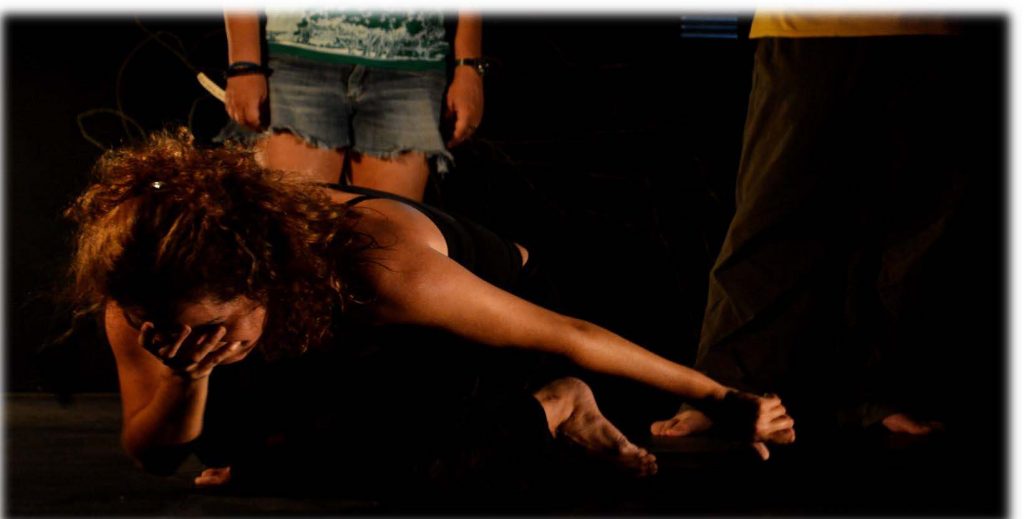
I write myself on these lines as a body in search of an existence that does not dilacerate my hopes. My art will not be the salvation of those who discriminate against, eliminate uratorial economies of adequacy. I am at the gallery of the lives and deaths of my body, a kind of ‘feminine’ that still runs through the sewer of our bored streets. I continue improvising, even when they try to teach me what improvising is. And I still survive with the weight of my hardened muscles supporting stories that are also mine, but have not yet been told.
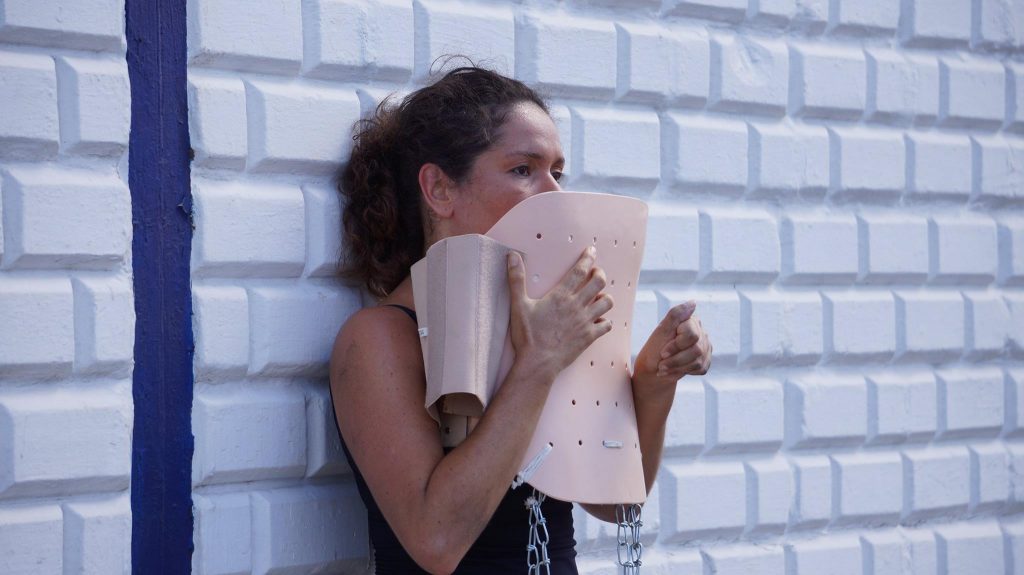
Disability exudes in my pores like a fix for an excluded body that recognizes itself in the permeating things of the world; in the trees, on the highway floors, in the hot pink sands. I have the solar and cold energy of a global south. A continent-aquarium, exoticized by a diversity that has never been consolidated, sinuous citizenships. And so, we receive the construction of a body only idealized as flawed, anti; almost; half body, half social identity.
Performances have been delivered to the world in a kind of shared solitude with other bodies, who land on the margins of past and present histories. I access an imagistic art form that provokes the imagination, both through the words it evokes and the reactions I experience with it.my body.
Regardless of being on stage performing discriminations, splits, exclusions, my body continues to live these impregnations outside the artistic space. So, I create from experiences that cuts through my flesh. Art is the encounter of everything that feels and affects me, it is a deep dive into disability with neither justifications nor requests for permission.
I have recognized myself in the social nominations that elect me woman, Latina, artist, researcher, one person among millions. However, it is enough for my art to fit into any performance time that I already live in society. Thus, I can deliver to the world the pains of my body and create poetry with the incarnate historicity that I carry in my limbs.
As an artist who has worked and still works in groups, collectives and also individually, I have tried to take my creations outside specific groups, to deepen and think about my work as a questioning force that does not want to be tied to an artistic ghetto. Instead, I want to rethink the idea of impossibility not as something negative but an experience that assumes the powerlessness of bodies, all the bodies.
I am much more interested in thinking about:
And what can a body not??
When I wear an orthosis or a prosthesis it starts to mean a social denunciation. At the same time, it is an invitation to all of society to recognize itself in the experiences of non-correction, of failure, of incompleteness that reverberate in our bodies. When I dance in the environment, among deformed trees, spaces of great emptiness, or even with elements like water, I understand it as a construction that recognizes the deficiency in nature, in ways that the world also offers and that even in their deformity they can exist with power and resignification.
If disability was a phenomenon extirpated from the history of societies, consequently its absence directly affects the world of arts based on the idea of virtuosities and creative efficiencies. I believe that my making art is also a way of thinking that has mobilized other perceptions about disability as a political practice of existence in life and in the arts.
In a divided Homeland
Education is a kind of stone
And I hear citizens in silence
Together
In a deformed world
In orthopedic cacti
Under failed skills
I drip myself
In grains of sand
In crooked drawings
EXHALE
My freedom rehabilitated
Learning from halves
The breath
Of non-efficiencies
From me the dance
And the world.
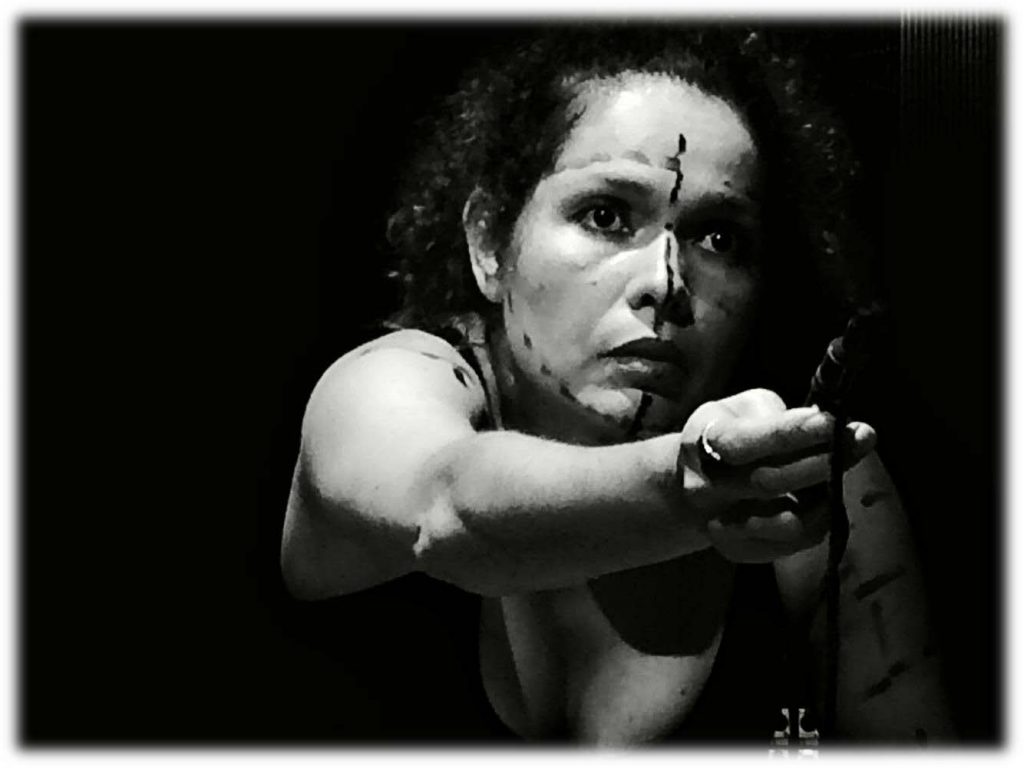
“Disability Futures in the Arts” is supported by the Canada Council for the Arts/Conseil des arts du Canada.
Back to Top of Page | Back to Disability Futures in the Arts | Back to Volume 16, Issue 4 – Winter 2022
About the Author
Carolina Teixeira is a Brazilian artist, performer, and political activist. She is a disabled woman and her work concerns the phenomenon of Disability as a political instrument of art and resistance. The anti-forms, the bodiedness collapse, and the politics of access are the artistic context of her Prosthetic Poetics. She is a Professor in the Performing Arts Department at Federal University of Paraíba/Brazil. Visit her website at: karullina8.wixsite.com/meusite